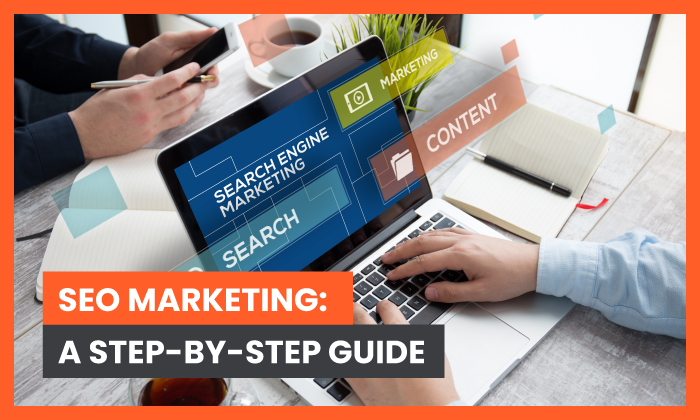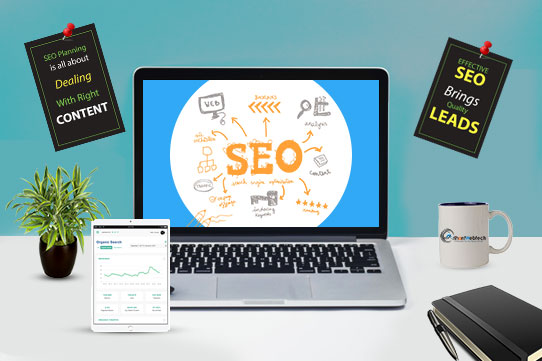The Complete Guide for SEO and Web Design

Search Engine Optimization (SEO) and web design are integral parts of running a successful website. The combination of both can mean the difference between success and failure in the online world. In this article, we provide you with a comprehensive guide to SEO and web design. We’ll explain the importance of the two disciplines, how they work together, and provide some key tips that will help you make the most of your website. With this guide, you’ll have the knowledge and tools to create an effective website that will generate leads and increase your online presence.
The Relationship Between SEO and Great Web Design
The relationship between great web design and search engine optimization is an important one. Great web design makes it easier for search engine crawlers to access and index a website. This is because website design with good usability, clear navigation and structure, and optimized content helps search engines understand the website better and rank it higher in the search engine results pages.
Additionally, good web design also helps to capture and engage website visitors, resulting in more traffic, better user experience, and improved search engine rankings. Ultimately, great web design and SEO go hand-in-hand and are essential for a successful online presence.
In the beginning stages of the creation of a website the developer can integrate strategic SEO elements into the structure of the website such as:
- Optimize page titles, meta descriptions, and headings to increase visibility on search engines
- Compress images, videos, and other website elements to reduce page load times and improve SERP rankings
- Incorporate keywords into page content for better indexing by search engines
- Utilize search engine-friendly URLs to increase search engine visibility
- Incorporate schema markup to improve SERP visibility
- Utilize internal linking strategies to improve website navigation
- Create an XML sitemap to allow search engine robots to crawl the website more efficiently
It is important to have an SEO strategy in mind before even starting to build the website. Characteristics such as domain names and page titles can play a significant role in the way that search engines use information to present websites that fit search queries.
The Importance of Keyword Research
Keyword research is the process of discovering and researching the words and phrases that people use when they search for information on the internet. It helps businesses and digital marketers to better understand the language that their target audience uses and to determine which keywords they should focus on in their marketing and SEO campaigns.
Keyword research:
- Helps to identify the best keywords to target for SEO
- Gives insight into what customers are searching for
- Helps to track and monitor keyword performance
- Provides valuable information about the competition
- Uncovers new keyword opportunities
- Helps to create better content
- Improves the visibility of a website in search results
- Enhances the user experience by giving them what they want
When done correctly, keyword research can help to increase website traffic, improve search engine rankings, and even increase sales. It is an essential tool for any digital marketing strategy, as it helps to identify the language that people are using to search for content or products that are relevant to the business.

Integrating Keywords Into Content for SEO
When integrating keywords into website content for SEO, it is important to use the keywords in a natural and organic way. The keywords should be placed in the titles, headings, and body of the content. When choosing keywords, they should be related to the topic of the content, descriptive, and relevant to the target audience.
Additionally, the keywords should be used in a proportion that is not too repetitive. The keywords should also be used in the meta description and image alt text. Finally, the keywords should be used in a way that is reader-friendly and makes sense in the context of the content.
It is important to use images that contain the subject of the keywords that you use in the alt text. People with disabilities that can’t see the pages depend on those descriptions to tell them what is on the pages. You can be creative with alt text, but be sure you keep the reader in mind.
When creating content for SEO it is imperative to be creative so that you can naturally mix your content with relevant keywords while contributing to a positive user experience at the same time.
- Include target keywords in title tags
- Utilize target keywords in H1 and H2 tags
- Incorporate target keywords into the first paragraph of content
- Make use of synonyms and variations of keywords throughout the content
- Utilize internal linking to pages with target keywords
- Include target keywords in meta descriptions
- Utilize target keywords in image alt tags
- Sprinkle target keywords throughout the content naturally
- Utilize external linking to reputable and relevant web pages with target keywords
- Use anchor text with target keywords for external links
- Use target keywords in the URLs of webpages
Don’t forget that in order for the website to be successful there has to be a well-balanced environment that is pleasing to search engines and pleasing to the people that are reading the content.
Create the Website with Quality Content
Quality content is better for SEO because search engines like Google use algorithms to rank websites based on their content. Quality content is more likely to be relevant, informative, and engaging for readers, and is more likely to be shared and linked to by other websites.
Quality content is also more likely to be optimized for keywords and phrases, which can help it rank higher in search engine results. Additionally, content that is written with the end user in mind is more likely to be crawled and indexed by search engine bots. Quality content is the cornerstone of any successful SEO campaign and can help boost website visibility, increase website traffic, and grow revenue.
Some examples of where to use quality content are:
- Well-researched and informative blog posts
- Engaging and keyword-optimized website copy
- Relevant and authoritative backlinks
- Quality images and videos
- High-value infographics
- Meta descriptions
- Keyword-rich titles and headings
- Intuitive navigation
- Internal linking
- User-friendly URLs
Some of the biggest mistakes a designer can make when creating content are:
- Content written with excessive or irrelevant keywords
- Content with numerous grammar, spelling, or punctuation errors
- Duplicate or plagiarized content
- Thin content with few words and little or no useful information
- Content not optimized for search engine rankings
- Content that does not add value to the reader’s experience
- Content not relevant to the topic or industry
The truth is that your content can either make or break your search engine visibility. The best way to make sure that you are providing great content is to write for the purpose of informing your visitors as opposed to writing for the sole purpose of SEO.
Designing for Local SEO
One of the biggest mistakes a designer can do is to fail to optimize correctly for local SEO. If you don’t want to compete with the entire planet for your keywords, make sure to create the site in a way that specifies where the location is.
Having an address on the website is important for local SEO because it helps search engines understand where the business is located.
This means that when customers search for businesses within their geographic area, your business will be more likely to appear in the search results. Additionally, it helps with local SEO as it can be used to identify local keywords for your business, which can help with your rankings.
Having an address on the website also provides customers with a better understanding of your business and where it is located, which can help build trust and credibility. Overall, having an address on the website is an important part of local SEO as it helps search engines and customers understand where your business is located.
Optimizing for local search engine visibility has a lot to do with creating an environment on the web that points attention to your website as a great place to go for needs in that particular area.
Some of the ways to build that environment are:
- Optimizing Your NAP (Name, Address, and Phone Number): Ensuring that your business information is consistent across all local listings.
- Claiming and Optimizing Your Google My Business Listing: To appear in local searches, you must have a complete and optimized Google My Business listing.
- Creating Local Content: Creating content specific to your local area that targets local customers, such as local events, news, and reviews.
- Building Citations: Creating listings on local directories, such as Yelp, Foursquare, and other local business listings.
- Developing and Enhancing Your Online Reviews: Having positive reviews on your business profile can influence local rankings.
- Optimizing Your Website for Local Search: Making sure that your website is optimized for local search by including local keywords, city and state names, and other local information.
- Generating Backlinks from Relevant Local Websites: Generating backlinks from local websites, such as local news outlets, can help to boost your local rankings.
Local SEO is all about connecting with the local community and having a positive reputation as a good place for customers.
Conclusion
The journey to successful SEO and web design can be a complicated one, but it doesn’t have to be. With this guide, you’ll have the basic tools and knowledge you need to make informed decisions when it comes to SEO and web design. From keyword research and content planning to design and optimization, you now have the resources to create a website that is both functional and visually pleasing. With the right strategy and dedication, you can create an effective site that will help you reach your goals and drive more business.



